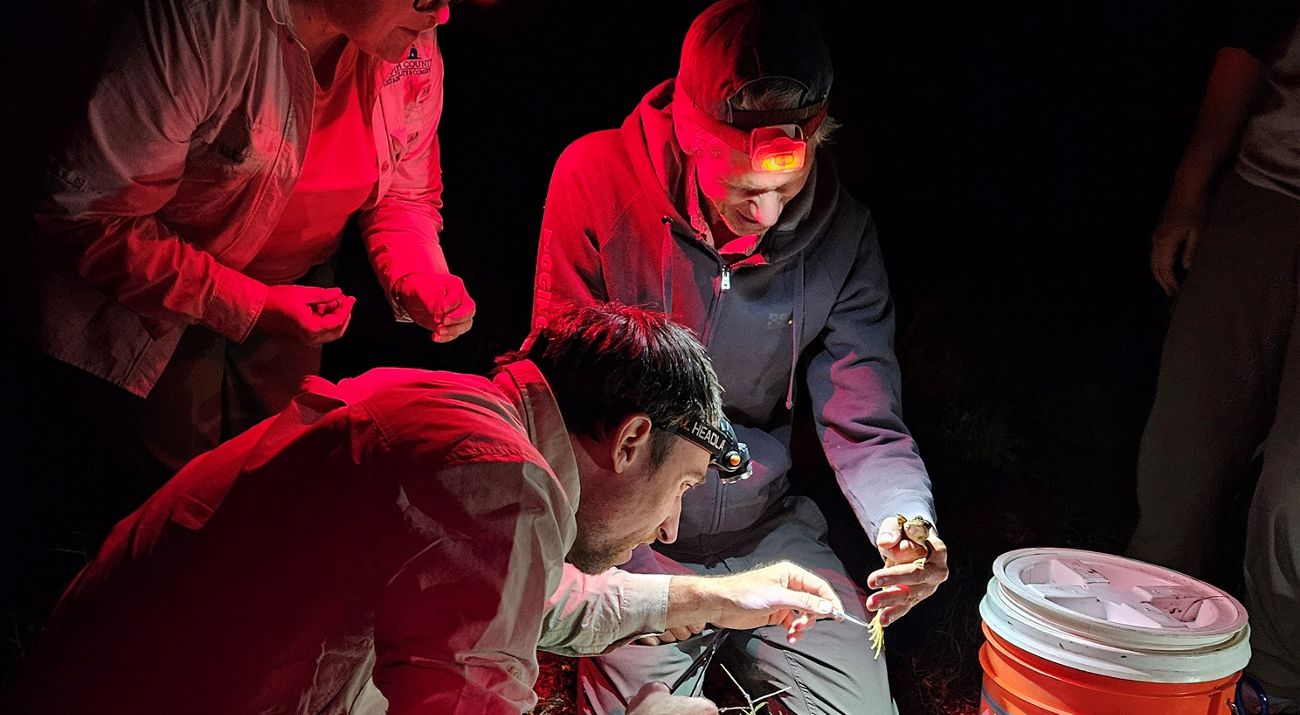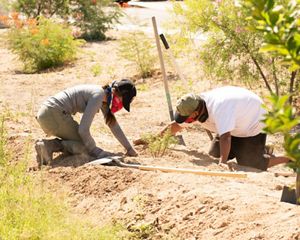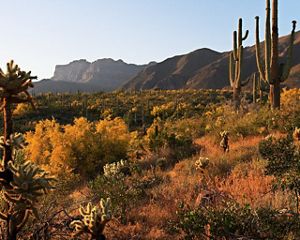Media Contacts
-
Bretta Nelson
Media Relations
Phone: 480-748-8640
Email: bretta.nelson@tnc.org
The Nature Conservancy in Arizona is known for its picturesque preserves, but beneath the surface lies a hidden world. TNC teams tirelessly protect these special places and the diverse habitats that house unique and remarkable wildlife. Among them are lowland leopard frogs (Lithobates yavapaiensis), nestled within the streams and ponds of the Lower San Pedro River basin.
While these frogs aren’t listed under the Endangered Species Act by the U.S. Fish and Wildlife Service, they are protected by the state, a recognition that underscores their importance and vulnerability, leading to specific regulations aimed at safeguarding them.
There’s another group also dedicated to their well-being: the Southern Arizona Leopard Frog Working Group. This collaborative effort involves partners from Saguaro National Park, Pima County, the Coronado National Forest, the Arizona Game and Fish Department, the University of Arizona, The Nature Conservancy and private conservationists. Together, they aim to unlock the frogs’ genetic secrets.
Their goal? To understand the genetic differences among frog populations using DNA. This data will inform translocations, or transfers to another region, and reintroductions across Southern Arizona, where disease and drought have caused some populations to disappear.
Muleshoe Ranch Training Session
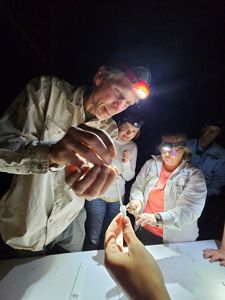

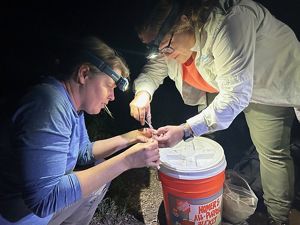
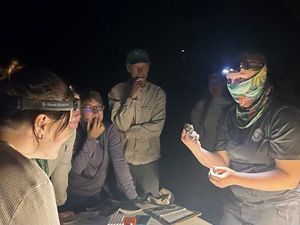

Preserve Manager Jeff Smith: Collecting samples during the training session. © John Windes/TNC

Lowland leopard frog: Participants learn to survey the frogs during the training session. © John Windes/TNC

Specimen collection: Participants also learn to collect frog tissues during the session. © John Walker

Frog survey: Scientists and conservationists seek to better understand the lowland leopard frog. © John Walker
Recently, TNC Arizona’s Muleshoe Ranch Preserve Manager, Jeff Smith, hosted an onsite training session led by the Arizona Game and Fish Department. Twenty-three participants learned how to survey, capture and collect frog tissues, a U.S. Forest Service funded research project that will span the year. These tissues will undergo genetic analysis, with University of Arizona researchers Javan Bauder, Beth Hasl and Jessica Rick deciphering the frogs’ genetic history. This research builds upon the groundwork laid by University of Central Florida’s Assistant Biology Professor Anna Savage.
This collaboration, grounded in science, underscores TNC’s pivotal role in preserving and managing habitats for a native species that plays a vital role in maintaining the delicate balance of arid ecosystems in Southern Arizona.
The Nature Conservancy is a global conservation organization dedicated to conserving the lands and waters on which all life depends. Guided by science, we create innovative, on-the-ground solutions to our world’s toughest challenges so that nature and people can thrive together. We are tackling climate change, conserving lands, waters and oceans at an unprecedented scale, providing food and water sustainably and helping make cities more resilient. The Nature Conservancy is working to make a lasting difference around the world in 81 countries and territories (40 by direct conservation impact and 41 through partners) through a collaborative approach that engages local communities, governments, the private sector, and other partners. To learn more, visit nature.org or follow @nature_press on X.
